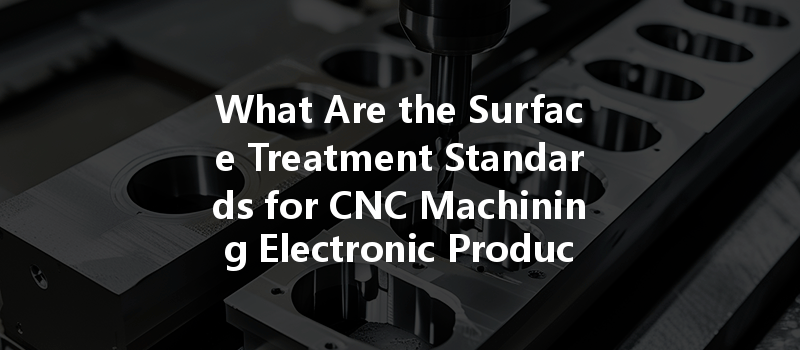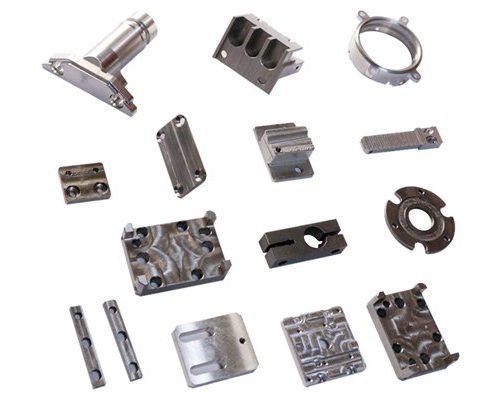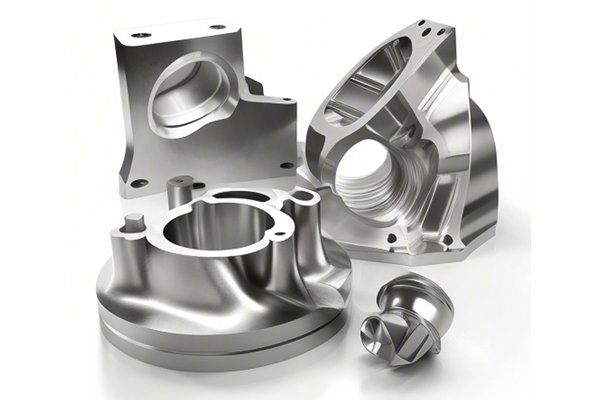Did you know that in 2023, more than 25% of products manufactured using CNC machining utilized surface treatment processes? This trend has been accelerating as industries demand higher precision, durability, and performance from their electronic components. As CNC machining technology continues to evolve, manufacturers must keep up with the latest standards and practices to ensure quality and competitiveness. So, what are the surface treatment standards for CNC machining of electronic products in 2024, and why do they matter?
In this comprehensive blog post, we will explore the surface treatment standards applicable to CNC machining electronic products, discuss the significance of surface treatments, highlight various techniques, provide design considerations, and examine the continual advancements in this crucial area of manufacturing.
Computer Numerical Control (CNC) machining is a manufacturing process where pre-programmed computer software controls the movement of tools and machinery. This technology is crucial in producing components for various industries, especially in electronics. CNC machining allows for enhanced precision, repeatability, and complex geometries that are difficult to achieve with traditional methods. More significantly, surface treatments applied to CNC machined parts play an essential role in enhancing functionality, protecting components, and complying with industry standards.
Surface treatments involve altering the surface of a material to improve its properties, functionality, and performance. For electronic products, these treatments offer numerous advantages:
The electronics industry, known for its rapid technological advancements and evolving consumer demands, requires manufacturers to ensure that their products not only function effectively but also meet stringent quality and safety standards.
In 2024, surface treatment standards for CNC machining electronic products are guided by various international standards and regulations, such as:
These standards ensure that manufacturers adhere to a systematic procedure, testing benchmarks, and documentation practices that foster trust and quality assurance in the final products.
Several surface treatment techniques are employed in CNC machining for electronic products. Some of the most common treatments include:

As CNC machining technology advances, so do surface treatment standards. Here are some key aspects to consider:
Material Compatibility
Different materials require specific surface treatments. For instance, aluminum anodizing should adhere to ISO 10081, while stainless steel products can follow ASTM A
Testing and Documentation
Post-treatment testing for functionality, corrosion resistance, and dimensional stability must align with ISO/IEC 17025 standards. Documentation of each process is crucial for quality tracking and compliance.
Environmental Regulations
Manufacturers must comply with environmental standards, such as RoHS (Restriction of Hazardous Substances), to ensure that surface treatments do not introduce harmful materials into electronic products.
Quality Control Protocols
Implementing effective quality control protocols, including periodic audits and routine inspections in line with ISO 9001 standards, is essential to maintaining high-quality production.
Design considerations are crucial in ensuring that the surface treatment process achieves its desired outcomes. Here are some key aspects to take into account:
Surface Roughness
The initial surface roughness of the machined part plays a critical role in the effectiveness of coating adherence. Designers should aim for an optimal surface finish that supports the chosen surface treatment.
Geometric Complexity
Intricate components must be designed to allow ease of access for surface treatment application. Manufacturers should consider the process capabilities and limitations when designing parts.
Tolerances
Tolerance requirements should align with surface treatment specifications; tighter tolerances may necessitate additional considerations in the surface preparation phase.
Thermal Considerations
Some surface treatments may affect the thermal properties of the components. Designers must always consider how the treatment will interact with the material’s thermal profiles to avoid complications in performance.
As technology continues to progress, so do surface treatments. In 2024, expect to see several emerging trends, including:
Non-Traditional Surface Treatments
Innovations like laser surface texturing and nano-coating techniques have emerged, providing unique properties such as self-cleaning and enhanced wear resistance.
Eco-Friendly Treatments
As the emphasis on sustainability grows, eco-friendly treatments that reduce environmental impact — such as water-based coatings and non-toxic materials — are gaining traction.
Integration with Smart Technology
Integrating IoT (Internet of Things) solutions with surface treatment processes could lead to more efficient quality monitoring, predictive maintenance, and data-driven decision-making.
Customization and Digital Warehousing
Digital twin technology allows manufacturers to simulate surface treatments and refine designs before actual production, minimizing waste and optimizing performance.
In summary, understanding the surface treatment standards for CNC machining electronic products is vital for manufacturers aiming to produce high-quality, durable, and compliant components. By following the defined industry standards and considering factors such as material compatibility, testing protocols, and design considerations, you can enhance the functionality and marketability of your products.
As we move into 2024, staying informed about recent advancements and focusing on sustainable practices will differentiate your competitiveness in the expanding electronics market. Embracing the evolution of surface treatments will not only enhance product performance but also contribute to a more responsible manufacturing future.
Remember, the surface treatment process is more than just a final touch — it is an integral part of the product life cycle that requires careful thought and commitment to excellence. As we continue to explore new technologies and approaches, the potential for innovative and effective surface treatments will only grow.
Consider the information outlined in this blog as a foundation for your future projects, and take a fresh perspective on the importance of surface treatments in CNC machining. The time to implement these insights is now, as they hold the promise of significantly enhancing product quality and performance in your manufacturing operations.



